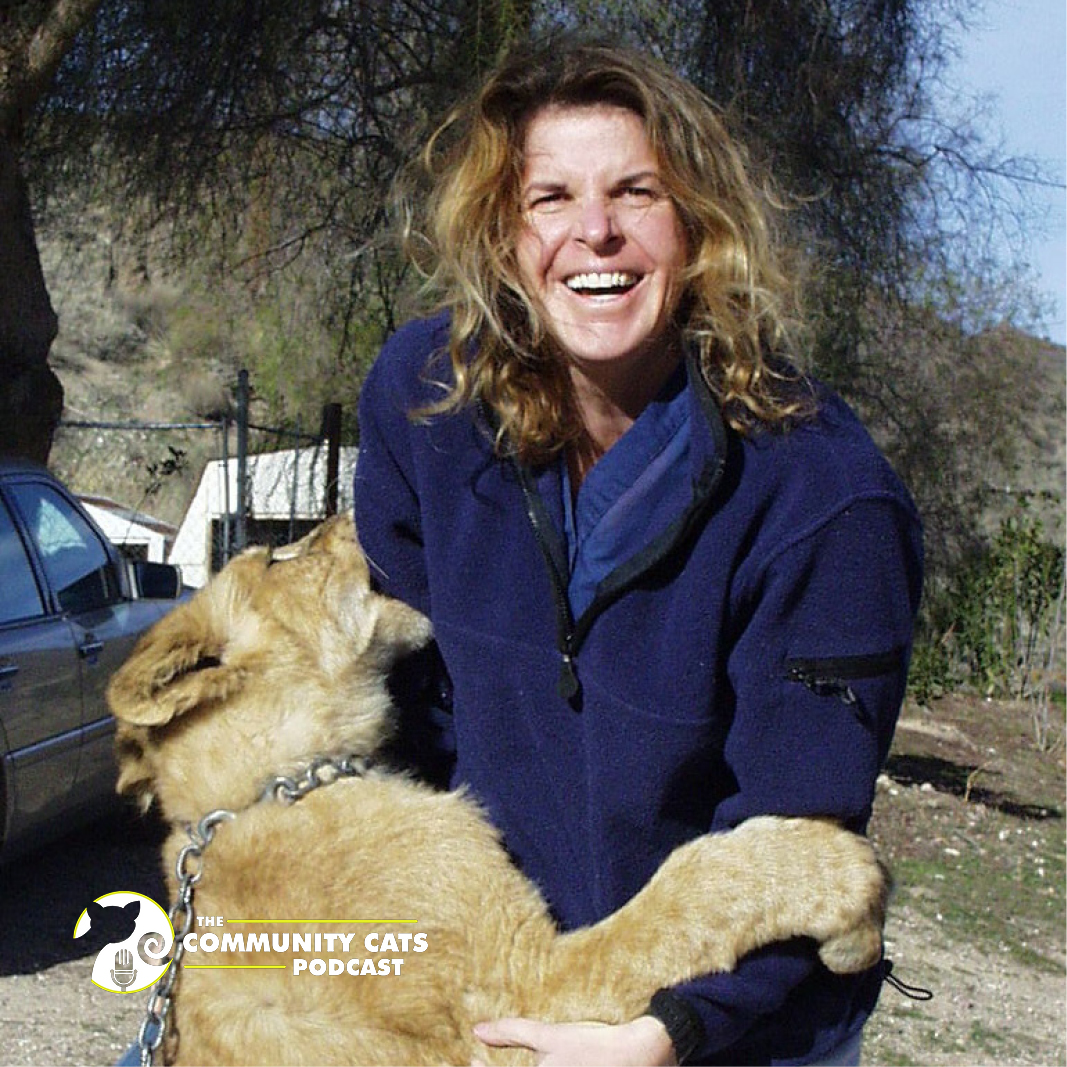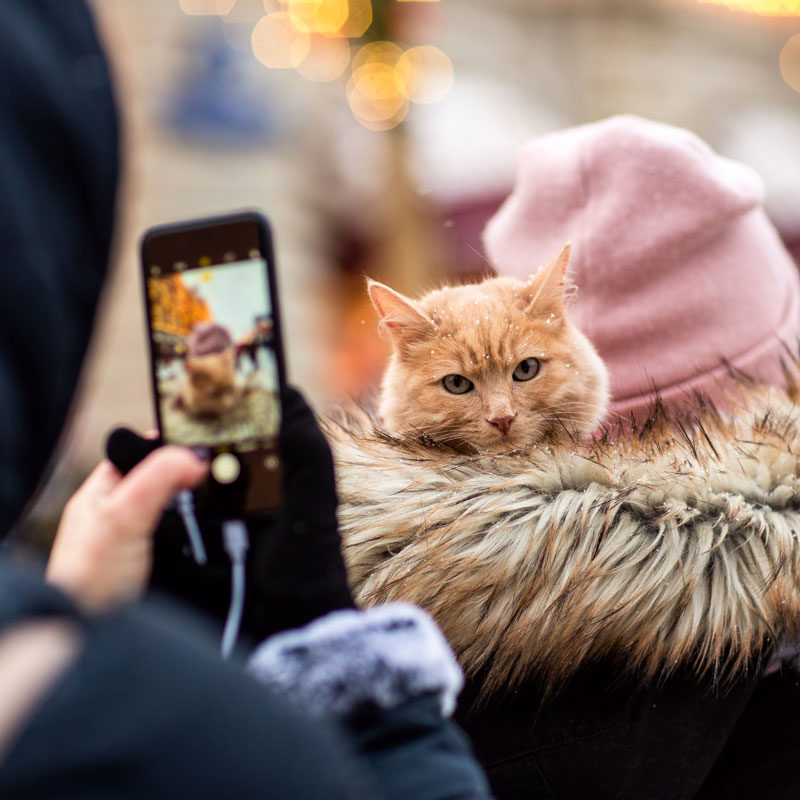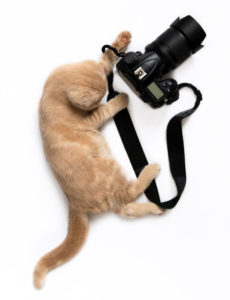
Best of 2020 – Dr. Jennifer Conrad, The Paw Project
December 1, 2020
Best of 2020 – Camille Labchuk, Animal Justice
December 8, 2020
From How to Take Awesome Photos of Cats by Andrew Marttila (@iamthecatphotographer).
If you read our recent Book Review post, I reviewed Marttila’s how-to guide on capturing our adorable felines. I’d like to do another post today outlining some of Marttila’s basic tips.
Behavior to watch for
Marttila starts off with some basic signs for reading cat behavior. You’ll get the best photos of your cat when he’s engaged, confident, happy, and playful. Watch out for pinned-back ears, a lashing tail, or a cat who is slinking around close to the ground. You might have to wait until your cat, or the cat you’re planning to photograph, is comfortable with you and your camera equipment. You won’t get good photos if the cat isn’t interested in being photographed. It can be helpful to bring toys or treats to keep the cat engaged and his eyes on you.
Basic photo guidelines
Next Marttila hits on some of the basics of photography. If you’ve never used a non-phone camera before, the jargon of aperture, perspective, exposure, and white balance can seem intimidating, but Marttila breaks everything down to make the guide really accessible. Some of the key points include filling the frame with your cat, situating her in the center of your shot, using natural light whenever you can and making sure light sources aren’t behind your cat (like if the cat is sitting in front of a window), taking photos from down on the cat’s level, and trying to keep backgrounds clean and not too distracting.
Phones
If you primarily take photos on your phone, not to worry. Phone cameras have improved dramatically in the last decade and you can get some really nice shots using just your phone. The first and easiest tip is to make sure to clean the lens of your phone’s camera. I know I’m always getting greasy fingerprints on mine, so simply cleaning the lens can improve your photos a lot. Phones do best in natural light, and can have some trouble in darker or indoor settings, so try to find a well-lit place to shoot. It can be tempting to use the built-in flash on your phone, but this usually results in your cat’s eyes reflecting the light back in a way that makes him look like a demon. Try an external light that you can aim the light more indirectly.
Another advantage of taking photos on a phone is photo bursts. If you keep your finger on the shutter button, your phone will take a bunch of photos in quick succession, increasing your chances of getting a good one. Then you can go through them and choose the best ones. Phones have less control over exposure, zoom, and focus, but you can adjust these by tapping the screen at the place you want the camera to focus, or on the brightest part of the screen to change the exposure. A few don’ts: try not to zoom, as this decreases the quality of the image. Move closer if you can or crop the photo later. Don’t take photos in square mode, or with filters, as this decreases the flexibility you have to edit the photo later.
 Cameras
Cameras
Marttila recommends a DSLR camera if you’re looking to take your cat photos up a notch. If you’re like me, you probably looked at your DSLR camera, saw all the settings and controls there are, and then felt completely overwhelmed and just decided to shoot on Auto mode. Marttila helps with this by breaking down the camera’s features and parts and then giving you the tools to put together all the elements of setting up a shot. He even gives some recommendations about where to set aperture, shutter speed, and ISO at in various scenarios. Just like with phones, it’s best not to use the built-in flash, but instead an external light.
Accessories
There are a multitude of accessories available for budding photographers. The ones recommended by Marttila are external lights, reflectors, and cat treats and toys. External lights can help you properly expose a shot, especially if you’re shooting indoors or in uneven light. This can be as simple as getting a selfie ring light or a cheap LED on Amazon or, if you’re willing to invest a little more money, you can get a more professional bounce flash to go with your camera. You can also get reflectors that help you bathe your cat in an even light. Last, it’s always nice to have some cat treats and toys, particularly noisy toys, in your cat photography kit, so that you can keep your cat engaged during the photo shoot.
Editing
Editing is the most daunting for me, but even if you don’t have a Photoshop-type program (Lightroom is the one Marttila recommends), your phone and computer come with basic photo editing software that can help you adjust your shots. There are also a few free photo editing sites like Pixlr, which has most of the same basic features as Photoshop. Marttila includes both basic editing tips and more advanced tips for all experience levels. He discusses how to adjust exposure, white balance, contrast and saturation, and clarity with the various sliding scales that are available in most editing softwares. Adjusting exposure levels can be helpful when trying to recover details in a portion of the scene that is a bit dark (this can be especially helpful with black cats). The white balance slider can help you make sure the colors in your photo are true to life, as sometimes light reflections from a red chair or yellow wallpaper can affect the coloring of your cat in the photo. When adjusting contrast, saturation, and clarity, it’s important not to go overboard and instead make small changes first. You can also use the clone tool (if available in your editing software) to help you make sure your cat is nice and clean, with no food bits stuck to his nose! Another good rule of thumb is to make a copy of the photo and edit the copy. That way, if you’re worried you’ll ruin the photo, you still have a copy of the original.
Using the photos
Now that you’ve perfected your photo-taking abilities, you can put those skills to work. Consider starting a business, or giving the gift of a great photo of a friend’s or family member’s pet. Another way to use your great skills is by volunteering your services for rescues. Having a good photo on the website can really help an adoptable animal find its forever home.
If you’re interested in learning more, I definitely recommend picking up a copy of Andrew Marttila’s book, which can be found here.
 Originally from Colorado, Krista Beucler received a Bachelor of Arts in creative writing at the University of Mary Washington (UMW) in Virginia. She was the editor-in-chief for Issue 7.2 of the Rappahannock Review, the literary journal published by UMW. Krista’s creative work has been published in From Whispers to Roars literary magazine. She is spending COVID-19 at home with her cats.
Originally from Colorado, Krista Beucler received a Bachelor of Arts in creative writing at the University of Mary Washington (UMW) in Virginia. She was the editor-in-chief for Issue 7.2 of the Rappahannock Review, the literary journal published by UMW. Krista’s creative work has been published in From Whispers to Roars literary magazine. She is spending COVID-19 at home with her cats.




